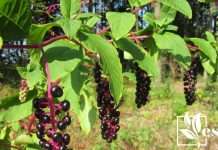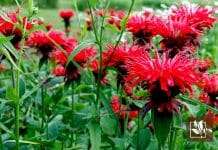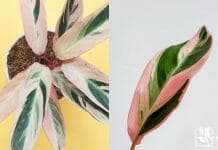Plants that look like mint have more, if not the same, number of benefits as mints. Mints, also known as Mentha Spicata of the Lamiaceae family, are useful in a variety of contexts, but plants that are superficially similar to mint also have a lot of going for them.

However, there is a possibility that some people will have a tough time locating these plants that resemble mint. For this reason, we have compiled this list of plants that are similar to mint.
Learn more about these plants by consulting the following list, which is provided for your convenience. If your mint plant has white spots, make sure to follow our guide and revive it.
JUMP TO TOPIC
Plants that Look Like Mint
1. Lemon Balm
The Lemon Balm or scientifically known as Melissa Officinalis has lemon-scented leaves. It is a bushy flowering perennial that is a member of the mint family, which is the primary reason that this plant is generally cultivated in front of borders or herb gardens.
It was brought over from Europe, and now it may be found naturally occurring across a large portion of North America.
– Growth Requirements
If you do not want this plant to propagate via rhizomes and produce its own seeds, you should cultivate it in a pot instead of your garden.
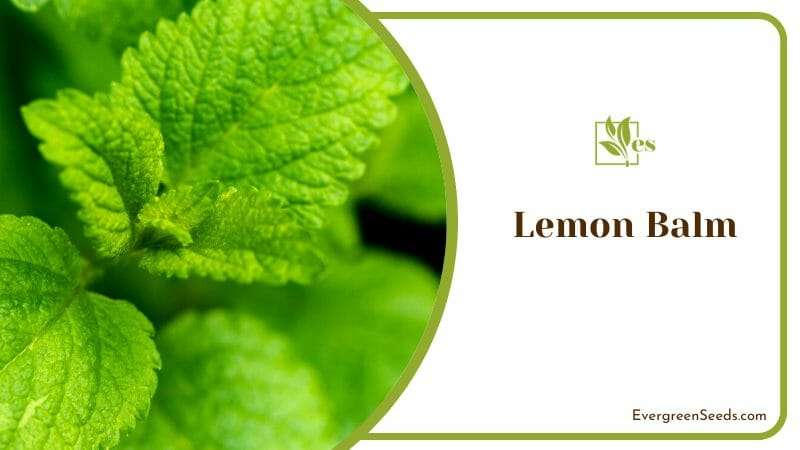
You can achieve a better appearance for the plant by performing some light pruning, which involves removing wasted flower stems and encouraging new development.
The younger leaves have a stronger flavor than the ones that have already fully matured. There is a potential for certain common issues to arise, including leaf spots, powdery mildew, leaf blight, and gray mold.
Once grown completely, it may survive in low-quality soils and drought conditions despite its preference for well-drained soils in full sun to partial shade. There are a few pests that can eat a mint plant, so these pests can also attack your lemon balm as well.
2. Purple Dead Nettle
Lamium Purpureum is the scientific name for the plant commonly known as purple dead nettle.
– Features
The plant, which has its roots in Europe and Asia, is typically categorized as a weed. It has a low growth rate and blooms continuously throughout the year, even when the weather is cooler in the winter. Lawns, gardens, roadsides, and meadows can all be good places to look for them.
It is frequently confused with henbit, and the two plants can grow together in some environments, as the leaves of henbit have no stems. During the relatively mild temperatures of April, this plant matures very quickly.
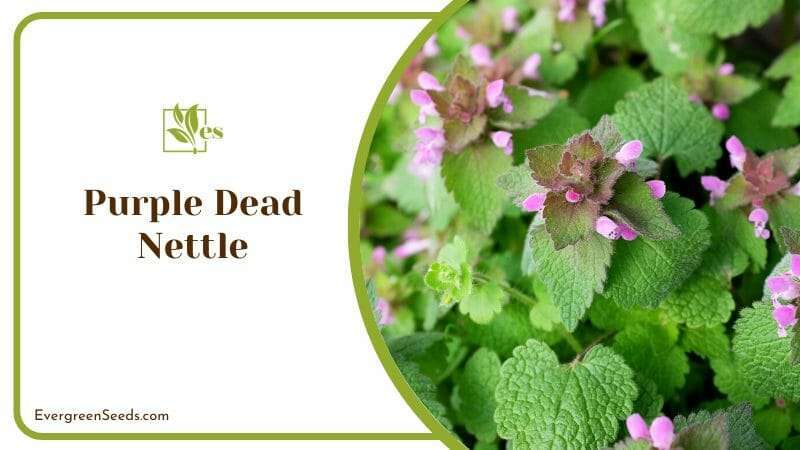
However, throughout the entire year, it produces flowers that are either yellow, lavender, or purple, and each flower has a hooded petal at the top and two lower lip petals. It features purple leaves that are serrated, undulates, and cordate, and the hue is a deep purple.
– Growth Requirements
When you are cultivating the plant, you must not that it thrives best in rich, moist soil that receives full sun but can tolerate some mild shade.
This plant’s foliage is not overly susceptible to damage from pests such as disease or insects, and this is because of the chemicals it releases in the air, that would repel a big number of pests.
3. Apple Mint
Apple mint also known as Mentha Suaveolens, is a species of mint that belongs to the family Lamiaceae. The southern and western parts of Europe, as well as the Mediterranean region, are its natural habitat.
– Features
It is a flowery, erect perennial that is most usually grown as a flavoring agent or for land cover. It can also be used in either of those capacities.
The height of an apple mint plant can range anywhere from sixteen to thirty-nine inches, and it forms clonal colonies through the growth of underground stolons. Because of its appealing appearance, it is frequently cultivated for its use as an ornamental tree.

It is possible to make apple minty jelly from the plant’s leaves, and they can also be utilized as a flavoring component in other foods, such as apple minty quinoa. In addition to that, it is frequently utilized in the preparation of herbal tea, as a condiment, and in salads.
– Growth Requirements
It can withstand harsh conditions and is simple to cultivate, although it does best in conditions with full sun rather than partial shade. As this plant belongs to the mint family, one thing that you should note is that it needs to be in a soil that is moist but not wet, so that the roots won’t be damaged.
Furthermore, note that it will start to bloom even more when the conditions of the weather have gotten warmer.
4. Pineapple Mint
The pineapple mint is prized for the iridescent patterns that appear on its leaves. Because of the exquisite appearance of its foliage, it is actually cultivated for the sole purpose of serving as an ornamental to any of the other trees on this list. Although, you may still put it to good use in the kitchen.
– Features
Given the remarkable appearance of the leaf, it is possible that this mint will prove to be the most suitable option for use as a garnish.
Furthermore, it does look like the mint plant, but the only difference with them both is that this one has leaves that are wider in their width which makes them grow thicker.
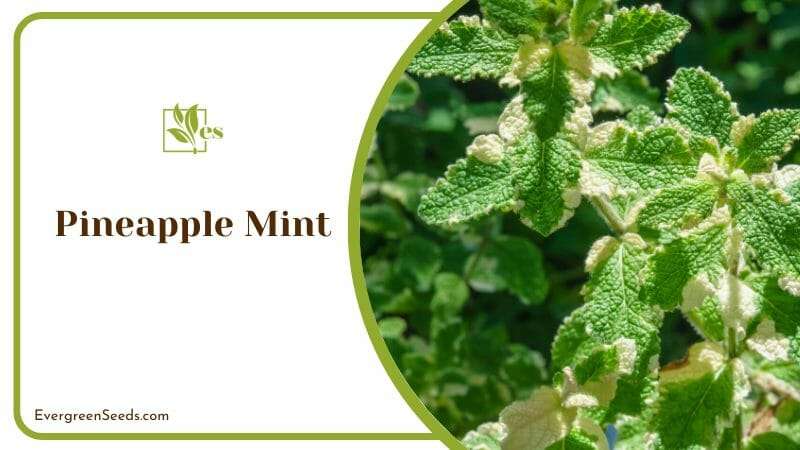
On the other hand, the foliage has a pale green color, and the opposing, wrinkled, sessile leaves are oblong to almost ovate in shape, about two inches in length and about an inch across at the broadest point.
– Growth Requirements
It thrives best in complete sunlight in the Northern regions but may tolerate some shade in the Southern regions, but when it sees the full and direct sun as well, still it will grow well. Additionally, the soil must be well-drained, rich, and moist. Just as the soil feels dry, that is the best time when you can water it.
5. Peppermint
It is most usual to cultivate Peppermint as a medicinal or culinary herb as well as a ground cover. Peppermint is a perennial herb that grows upright. It grows by sending out rhizomes and eventually forms a ground cover that is both lovely and aggressive.
– Features
When you check this plant and the mint on their own, they resemble each other so much, however, the way that you can tell them apart would be by the edges of the leaves. When the edges are softer, it means that this is a peppermint, which has a heavier aroma and a stronger taste.
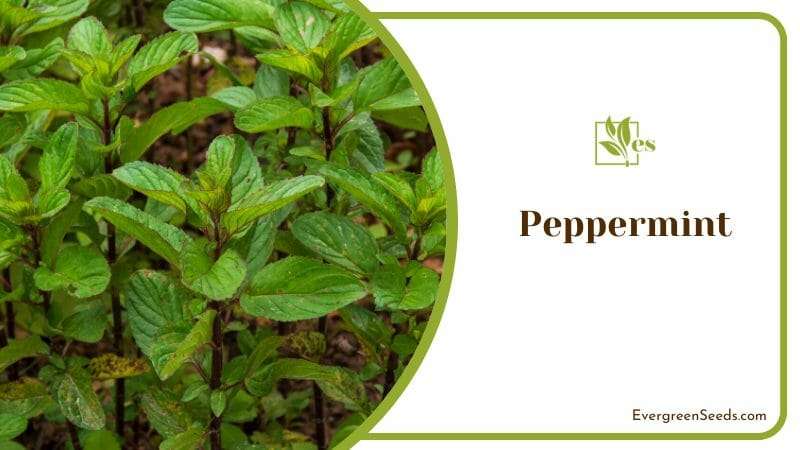
Note that the color of this plant should be a bit darker in the shades, in addition to this, the plant’s stem is one that is four-sided or square in shape.
– Growth Requirements
It is recommended that you cultivate it in a container that has a width of around one foot in order to better manage its invasive spread. If you want to grow it on the grounds, leave at least one foot and a half of space between each individual plant.
It is tolerant of many light levels and soils, except for dry ones, but it likes rich soil moisture in partial shade. Surprisingly, it grows rather well in shadier locations, as it only needs a minimum of two hours of sun per day.
6. Chocolate Mint
A relative of peppermints, chocolate mint is an outlier in the mint family. The word “chocolate” within the name derives from the aroma, not the flavor of the substance.
– Features
The reason why the name chocolate has been added is that the color of the leaves are a bit brown on the shades, and it is directly featured as you turn it to the back, the veins are maroon or red and brown.
If the visual aspects of this herb are of interest to you, you should know that it contains leaves that are a deeper green than the foliage of most other species of mint, along with blossoms that are a lavender color.
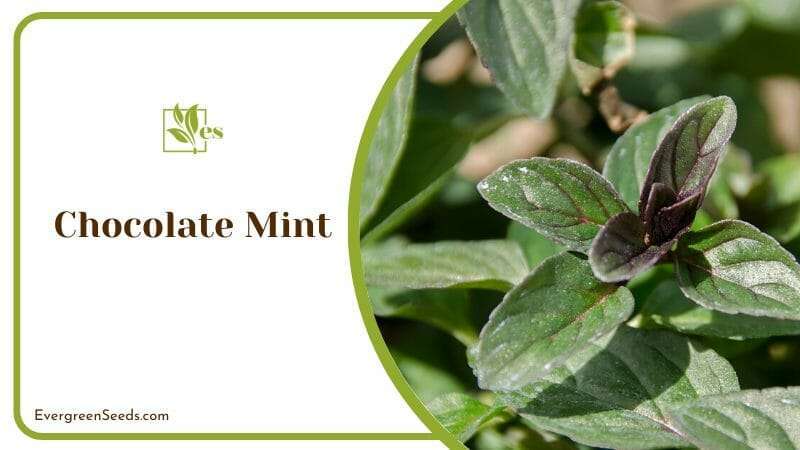
The chocolate mint blossom opens its petals starting at the bottom and working its way up. The blooms of the green pods that are found on drop off, then the tip of the pod proceeds to expand and flower.
– Growth Requirements
This plant does well in either full or partial sunlight for long periods of time on a daily basis, so that it would grow to its maximum capacity. Nevertheless, the soil must be kept in moist condition in order for it to thrive, you should remember that the soil should be a well-draining one so that it doesn’t keep water at the bottom.
7. Wild Mint
The scientific name for the wild mint is Mentha Arvensis, although it’s more commonly known by its other names, such as corn Mint or field mint. In the family Lamiaceae, it is the only flowering member.
It is native to the temperate zones of Europe, east to the Himalayas, central and western Asia, North America, and eastern Siberia, giving it a circumboreal distribution.
– Features
Wild mint is a perennial herb that can reach heights of two or three feet. It grows upright or semi-spreading square stems from a creeping rootstock.
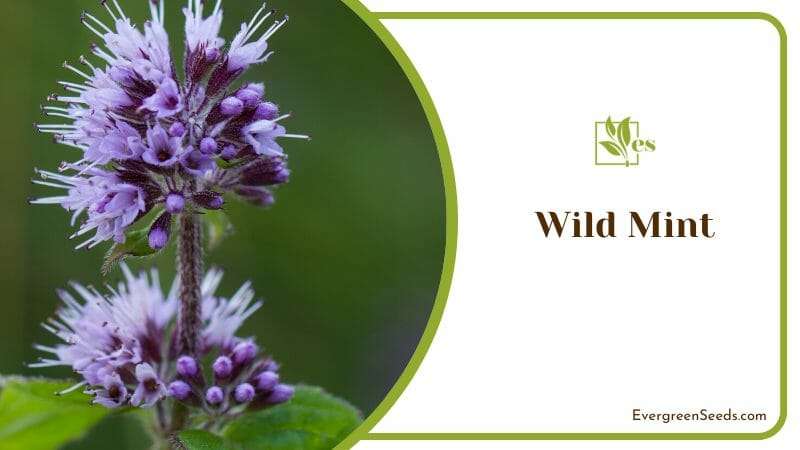
The leaves are paired off, simple, hairy, and coarsely serrated around the margin. The whorls of white, pink, or pastel purple flowers appear at the leaf bases along the stem. Each blossom features a hairy calyx with five lobes, a corolla with four smaller lobes and one larger one at the top, and four stamens.
– Growth Requirements
Moist areas, especially those along streams, are ideal, and some shade is necessary due to the plant’s inability to withstand prolonged exposure to direct sunlight.
As you would grow it properly in the right conditions, in spring time you would start seeing the blossoms of this plant grow, and as it does so, pollinators will be attracted to the aroma and would come for a successful pollination process.
8. Corsican Mint
Corsican mint also known as Mentha Requienii, is a species of mint herb that is indigenous to the Mediterranean islands of Sardinia, Corsica, and Montecristo. It has also been naturalized in Portugal and the British Isles.
– Features
It is a plant that grows to a very low height and has bright green leaves that emit a potently minty scent. The Corsican mints are one of the more diminutive species that belong to the mint family. It attains a height of about five inches, has small leaves shaped like ovals, and produces teeny mauve blossoms in Fall that are pollinated by insects.
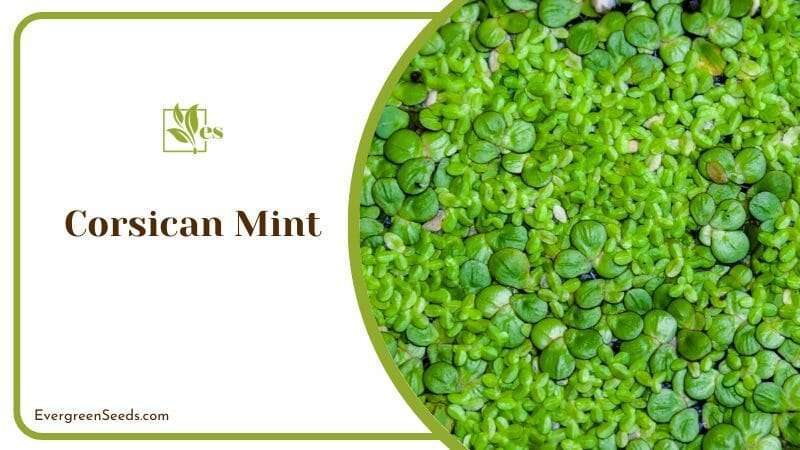
It is also possible to use it as a bed linen plant in landscaping, and when it is trampled on, it will emit the pleasant aroma of Mint. Because it is safe to walk on, it is often used to line sidewalks and is planted in the spaces between stepping stones. This is due to the fact that it does not die from foot traffic.
– Growth Requirements
This plant stays small and grows well in whether it is placed in a shaded location or under full and direct sunlight, this plant will be happy.
Furthermore, if you are located in zones 7 to 9 on the hardiness zones, it will be ideal for this plant, and on the other hand, make sure that the soil is a moist one as you would water it when the soil feels dry.
9. Pennyroyal
Pennyroyal, scientifically known as Mentha Pulegium, is a type of flowering plant that is one of the members of the family Lamiaceae and is indigenous to North Africa, Europe, and the Middle East. Other names for this plant include Pudding Grass and Mosquito Plant.
– Features
Pennyroyal has a pungent, peppermint-like aroma that can be released when the leaves are crushed. It can live for one year or several years and has creeping or upright stems that are branched.
The stems have a cross-section that is square, and their appearance can range from smooth on some stems to sparsely furry on others, with a hue that is often green but can also be red or purple at times.
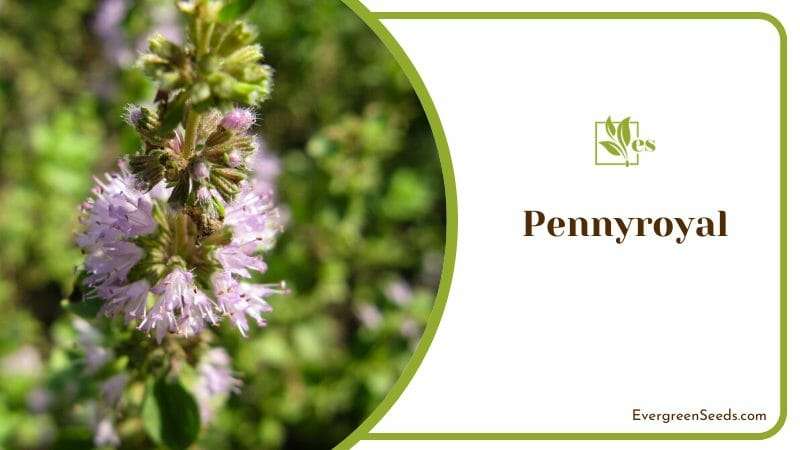
Narrowly oval in shape, downy on the underside, and sparsely serrated towards the tip, the leaves gradually narrow into a short stalk as they develop in opposing pairs.
– Growth Requirements
Along waterways, in damp forests, and in fields that have been abandoned are the common places that you can find it. In order to see it thrive, make sure that this mint is located underneath the full sun, as this will supply it proper energy.
In addition, make sure that you water it whenever the soil feels moist, because remember that it will be under the sun, so you must water it every three to four days.
10. Water Mint
The water mint, also known as Mentha Aquatica according to its scientific name, is a flowering plant that is perennial and belongs to the mint family, Lamiaceae. It is endemic to much of northwestern Africa, Europe, and southwest Asia and prefers to thrive in damp environments.
– Features
The water mint plant is a perennial herbaceous rhizomatous plant that can grow to a height of thirty-five inches. The stems have a cross-section that is square, can be green or violet, and can range from being hairy to virtually hairless. The rhizomes have widespread, and meaty, and have roots that are fibrous.
The leaves are opposite, oblong to ovate-lanceolate in shape, around two inches long and about an inch broad, green (occasionally purplish), toothed, and the level of hairiness ranges from practically hairless to hairy.
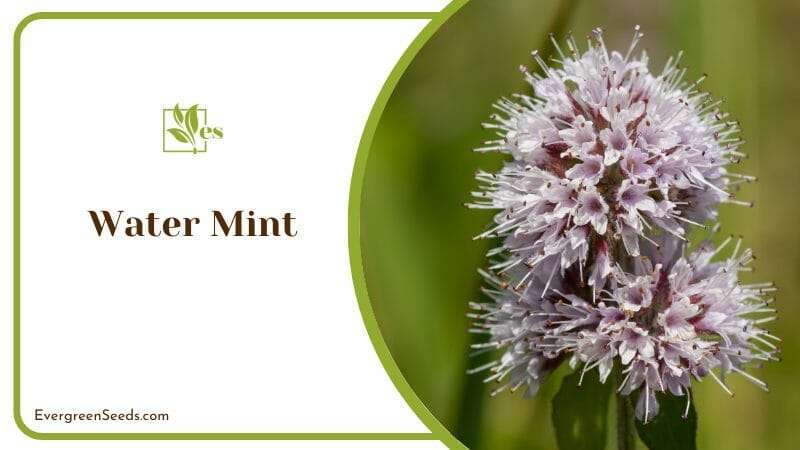
Small, highly crowded, violet, tubular, reddish to lilac in color, and forming a distal hemispherical inflorescence are some of the defining characteristics of the blooms produced by the water mint.
– Growth Requirements
The reason why this plant needs a lot of water when it is growing and soil that is cool is because you would usually find it in the weak margins and banks of rivers, streams, dikes, pools, canals, ditches, fens, and wet meadows, are ideal locations for the growth of water mint.
This location is a place where it would see the sun on a daily basis, and pollinators would come because they would get attracted.
11. American Wild Mint
These mint plants are known as Mentha Canadensis and are indigenous to both the eastern region of Asia and the continent of North America. It is frequently referred to as American Wild mint or Canada mint in North America.
– Features
On the other hand, the plant is known as Sakhalin mint, Chinese mint, east Asian wild mint, and Japanese mint in Asia. The color of the blossoms is either bluish or has a little hint of violet. The plant maintains its erect posture and can reach a height of around one foot.
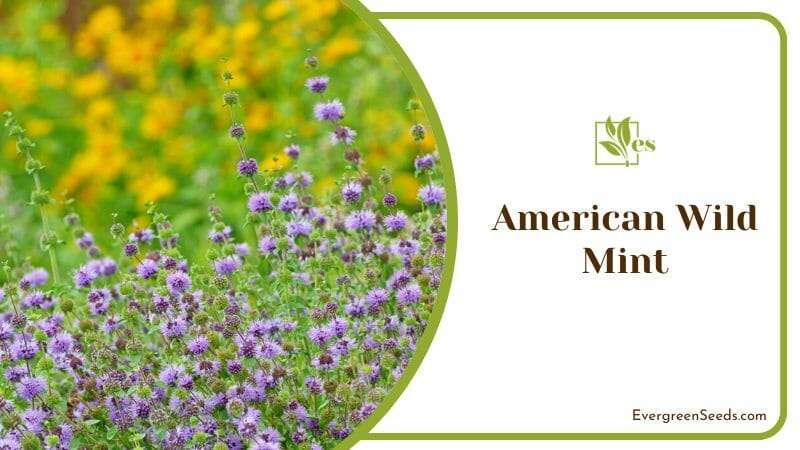
Each pair of leaves develops in the opposite direction from the other, and flower clusters arise in the axils of the uppermost leaves. In its natural environment, this plant blooms between the months of July and August.
It is a plant that lives for multiple years, as seen by its underground rhizome that creeps and its erect branches. Its hairy stems carry alternating pairs of leaves.
– Growth Requirements
It is found in moist locations but not in the water itself; therefore, it can be found along sloughs, as well as the edges of lakes and rivers. This means the soil must be moist.
However, if you are cultivating one at home you must remember to water it about an inch every week, as it would be placed under full to partial shades of sun.
12. Margarita Mint
If you are trying to avoid growing mint but want to have the flavor of it, Margarita mint can be a great option for you. It is a hybrid created by crossing two different species, and the leaves smell like lime.
– Features
It normally grows to a height of one foot but can reach a width of two feet thanks to above-ground runners that creep along the soil and root themselves as they go to create a beautiful ground cover.
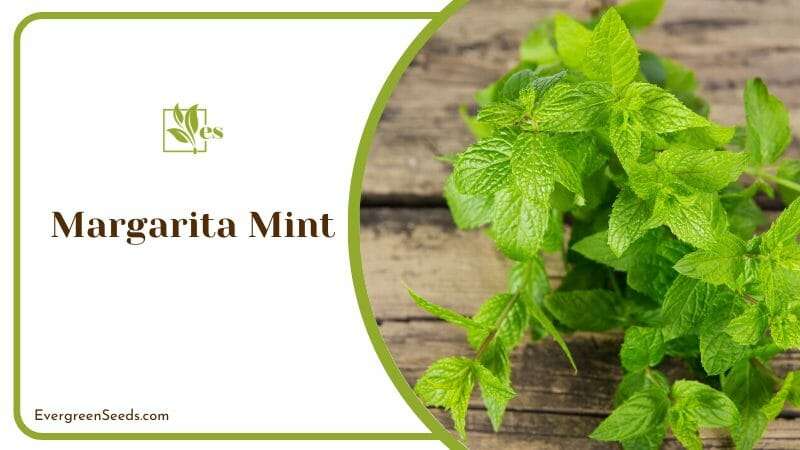
Not only that, but it has very few leaves that are spherical and bright green, with bronze tips accenting the tips of the leaves.
– Growth Requirements
It thrives in soils that are loamy, naturally rich, fairly fertile, consistently moist but well-drained, and can receive anywhere from full sun to partial shade. As in terms of fertilizing needs, you must fertilize it once in the year, and preferably in spring because it is the time when the plant is in its peak growing season.
13. Cuban Mint
Among many Mint varieties, Mentha x Villosa, more often known as Cuban Mint, is a perennial plant that is herbaceous, rhizomatous and grows to a height of two feet. It has a smooth stem that are square in cross-section.
– Features
The rhizomes are meaty and widespread, and they bear roots that are fibrous. The common mint, or Mentha Spicata, and the apple mint, or Mentha Suaveolens, are the parents of this recessive mutation of mint.
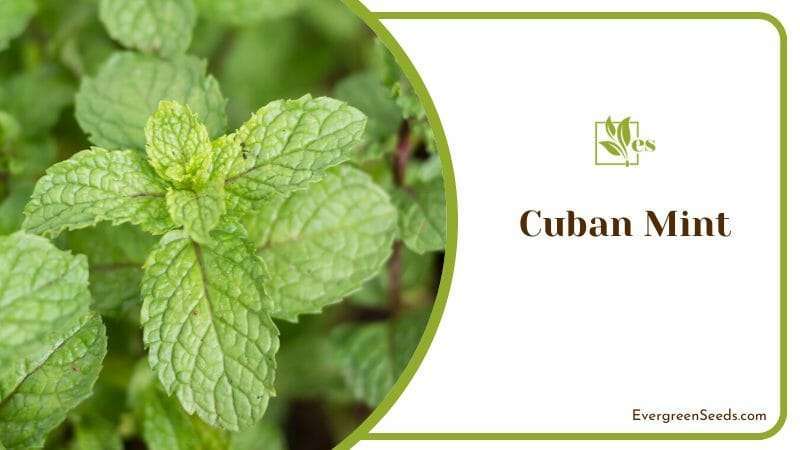
– Growth Requirements
This plant would thirve best in soil that is rich in organic matter and has high moisture content and prefers direct sunlight but can survive in dappled shade. However, as you have one at home, if you are growing it, make sure that you would mist this plant every once a while in order to keep the right consistency of the humidity level.
Furthermore, you must be mindful not to overwater it, knowing that it is a plant that loved to be watered often, because when you overwater it, there is a risk to develop root rot or see the foliage lose its color and turn yellow.


